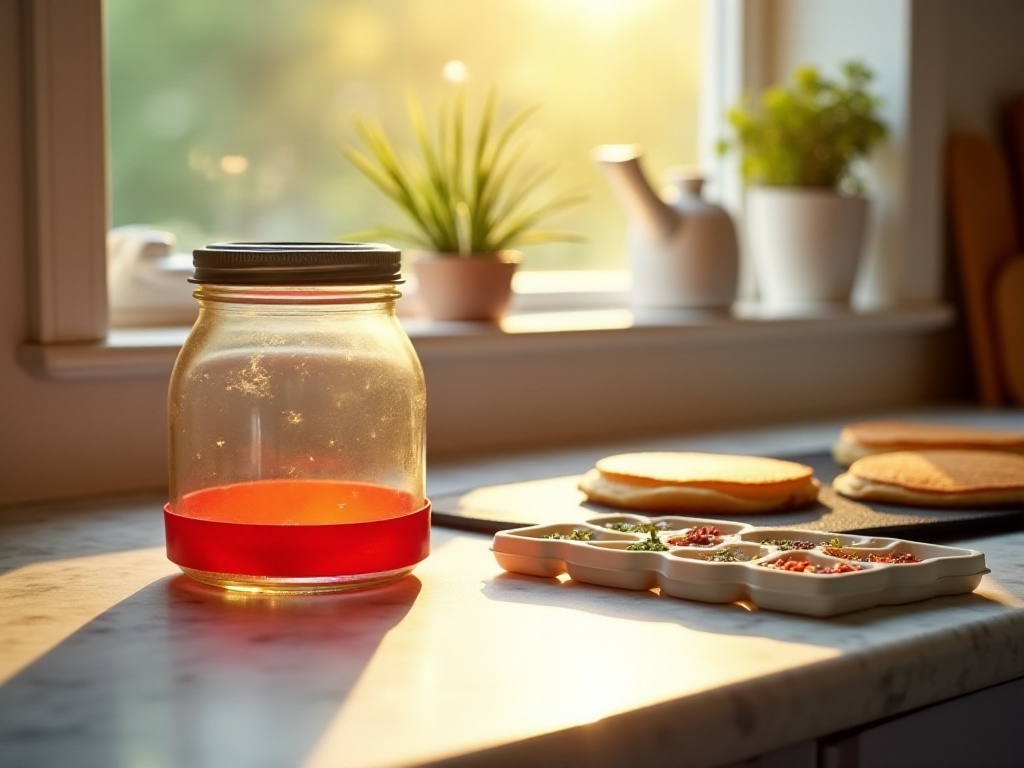Opening Words
Do you feel envious when seeing friends posting delicious food photos while you can only order takeout? Actually, cooking isn't as difficult as you might imagine. As someone who evolved from a kitchen novice who would burn fried eggs to an expert who can prepare a feast for friends, I deeply understand the confusion and struggles involved. Don't worry - today I'll share some practical tips I've summarized from daily cooking that will help you easily master cooking essentials and never stress about kitchen work again.
Knife Skills Basics
When I first started learning to cook, I was completely overwhelmed. Cutting scallions was a disaster - I would end up in tears with eyes as red as a rabbit's, often becoming the subject of my roommates' jokes. Later, by chance, I discovered that putting scallions in the refrigerator for 10 minutes before cutting magically solved this problem. It turns out that low temperatures reduce the volatility of the pungent compounds, making them less likely to irritate your eyes. This method works for onions too - it literally saved my makeup!
When it comes to cutting, beginners worry most about cutting their fingers. I used to be very nervous too, until I learned the "cat claw" grip. Specifically, you curl your fingers like a cat's paw, tucking in your fingertips and using your knuckles to hold the ingredients. This way, even if the blade accidentally touches your fingers, it will only hit your nails rather than cut your fingers. The position might feel awkward at first, but you'll find it particularly safe and practical once you get used to it.
Beyond basic cutting techniques, there are many knife skill tips. For example, when slicing meat, you can first freeze it for 20 minutes - this makes the meat slightly firmer and easier to cut into uniform thin slices. Keep your cutting board dry and clean when chopping - this is not only hygienic but also provides more stability.
There are specific techniques for different ingredients. For Chinese chives, it's best to cut them horizontally to preserve their fibers, maintaining texture while allowing flavors to penetrate. When cutting ginger into strips, follow its grain - this makes it easier and produces more attractive results.

Seasoning Tips
Seasoning is arguably the most skill-intensive aspect of cooking. Many people think seasoning relies purely on intuition, but there are actually patterns to follow. First is the timing of adding salt. I've developed the "three-stage addition method": add 30% of the salt at the beginning of cooking to season the ingredients themselves; add 50% in the middle, which is the main seasoning stage; add the remaining 20% during the final reduction to adjust the final saltiness. This ratio can be slightly adjusted for different dishes, but the basic principle remains constant.
Regarding seasoning ingredients, I recently discovered a particularly useful method: freezing seasonings in ice cube trays. Sometimes we only need a small amount of minced garlic or ginger but don't want to mince fresh ingredients every time. You can pour prepared minced garlic, ginger, etc. into ice cube trays and freeze them, then just take out a cube when needed. This not only prevents seasonings from spoiling but also allows precise portion control and is very convenient.
The combination of seasonings during cooking is also important. For example, when stir-frying vegetables, if you want them flavorful without using too much salt, you can add some minced garlic for extra umami. When making braised dishes, you can first caramelize sugar to create a beautiful color and enhanced flavor.
Sauce preparation is also an art. I often prepare versatile sauces like garlic sauce and scallion sauce, which can be stored in the refrigerator for some time. When needed, take them out and combine with different main ingredients to create various delicious dishes. For example, garlic sauce can be used for noodles, stir-fries, or even spread on toasted bread - absolutely delicious.

Ingredient Storage
Storage is an issue every cook encounters. If ingredients aren't stored properly after purchase, they can easily spoil, wasting money and affecting mood. After multiple trials, I've summarized some practical storage methods.
Let's start with common vegetables. Greens wilt easily, but with the right method, they can be preserved longer. The specific approach is: first wrap them in storage bags, then poke several small holes in the bags. This maintains ventilation while preventing excessive moisture loss. For lettuce, water spinach, and similar leafy vegetables, you can wrap the roots in kitchen paper to absorb excess moisture and prevent root rot.
Fruit storage also requires attention. Take bananas for example - many people buy a bunch but they often all ripen before they can be eaten. Actually, you can store bananas separately and wrap their stems in plastic wrap. This reduces ethylene release and extends shelf life by at least 3-4 days. If you have apples, keep them separate from other fruits, as apples release ethylene which accelerates the ripening of other fruits.
For root vegetables like carrots and potatoes, don't wash them before storage - instead, wipe off surface soil and store them in a cool, ventilated place. If already cut, cover the cut surface with plastic wrap to prevent moisture loss.
Meat storage is also important. For meat to be frozen, it's best to divide it into small portions so you can thaw according to need. You can marinate the meat before freezing - this not only preserves it but also allows for immediate cooking after thawing, which is very convenient.

Cooking Techniques
Regarding cooking techniques, the most fundamental is heat control. Many people stir-fry with very high heat, resulting in ingredients that are burnt outside but raw inside. The key is controlling oil temperature. There's a simple test method: insert a chopstick into the oil - if small bubbles form around it, the temperature is around 160 degrees, suitable for most ingredients. If large bubbles form with loud crackling sounds, the temperature is too high and needs to be reduced.
Cooking rice is also technical. Many people think using a rice cooker is simple, but water ratio control is important. My experience is: one cup of rice to one cup of water, plus one finger-width more. This produces rice that's neither too dry nor too wet, with perfect texture. If you prefer softer rice, add another half finger-width of water.
The order of cooking dishes is also important. Generally, cook strongly flavored dishes before mild ones; cook dishes requiring high heat quick-frying before those needing low heat slow-cooking. This prevents flavor mixing and maintains each dish's optimal condition.
There are also tips for handling special ingredients. For example, when stir-frying bean sprouts, be careful with salt timing - salt makes bean sprouts release water, so add it just before finishing to maintain crispness. When boiling dumplings, add cold water three times after boiling - this makes the wrappers more chewy and prevents breaking.
Braised dishes also have tricks. For example, when braising pork, if there's too much liquid, don't rush to reduce it with high heat - instead, slightly open the lid to allow gradual evaporation without overcooking the meat.

Concluding Thoughts
Through sharing these techniques, I hope everyone has gained new insights into cooking. Cooking is like playing a game - once you master these skill points, you can easily level up. Moreover, cooking provides the satisfaction of creating something yourself - seeing family and friends enjoy your food brings a fulfillment that takeout can never match.
Everyone's culinary journey starts from zero. Like me, from initial clumsiness to now confidently handling the wok, there have been both lessons from failures and joys of success. The most important things are patience, learning from experience, and courage to try.
The kitchen isn't just a cooking space - it's a laboratory for creating delicious food. Each attempt at a new cooking method is an interesting exploration. I hope these tips can help you avoid detours on your culinary journey and become a foodie sensation among your friends sooner.
Remember, great food isn't about being elaborate or complex - it's about putting your heart into it. With these basics mastered plus a bit of creativity, you too can create amazing dishes. Let's sweat together in the kitchen and create our own culinary stories!




